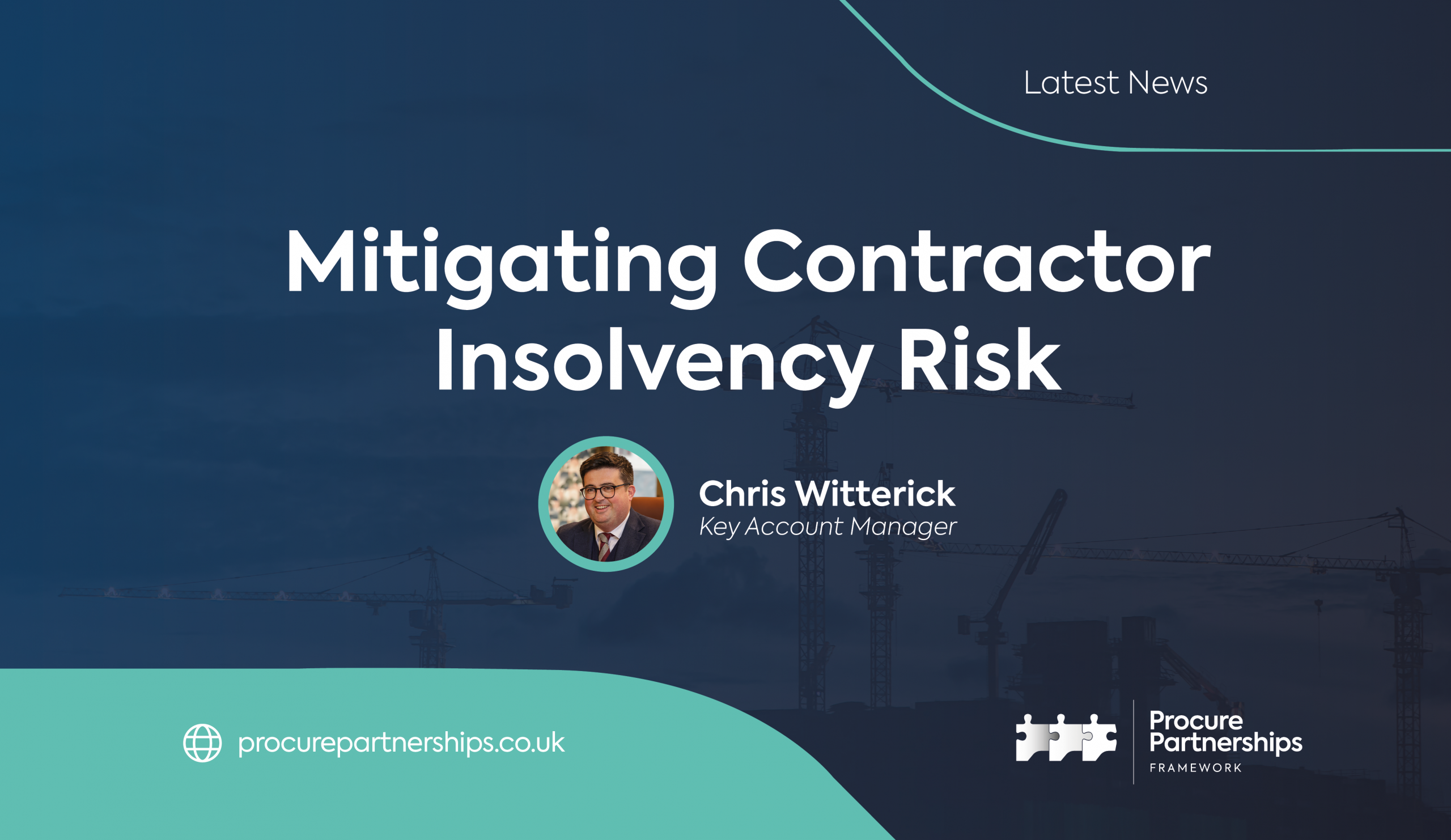Public sector bodies in the UK face a growing threat of contractor insolvencies as the rate of business failures continues to rise.
In 2023, a shocking 36% increase in contractor insolvencies, compared to pre-pandemic statistics, was recorded by the Insolvency Service. The construction industry still tops the table of sector insolvencies, being responsible for around one in six insolvencies in the year to 31st March 2024.
Insolvency Service data published by BCIS (Building Cost Information Service) in May 2024, confirms that the total number of construction firms becoming insolvent in the previous 12 month period was 4,287, representing a 1.9% increase on the previous year, and a 33.2% increase on 2019 figures.
According to Kelly Boorman, national head of construction at financial consultancy RSM UK, “Looking ahead to the third quarter of 2024, we’re likely to see construction insolvencies accelerate due to added strain in the market as businesses struggle with a lack of working capital, accumulated debt and falling cashflows brought about by legacy contracts.”
Public sector organisations such as local authorities, schools, universities, hospitals and emergency services are vulnerable to the impact of contractor insolvency. Taking strategic steps in the earliest possible stages of construction projects to mitigate risk is now more important than ever.
The risks of contractor insolvency
The risks of contractor insolvency and their impact on public sector construction projects cannot be underestimated:
Increased costs
Having to find replacement contractors in a short space of time can push public sector construction projects outside of the original budget
Disrupted project timeline
With no notice to put contingencies in place, a contractor insolvency undoubtedly causes delays to project timelines
Legal disputes
A public sector organisation impacted by a contractor insolvency is likely to find itself at the centre of a legal dispute which creates complications and additional costs
Financial strain
The financial strain faced by public sector bodies affected by a contractor insolvency can be crippling. It has knock-on effects for the funding of other projects, resolving the situation requires additional resources, and the long term impact of a building not being ready for its purpose is disruptive and costly.
How Procure Partnerships Framework can help public sector organisations to mitigate risk
Procure Partnerships Framework supports public sector organisations to find reputable, financially sound contractors within their regions. We conduct financial checks and provide due diligence services that give public sector bodies peace of mind when allocating contractors for their construction projects. Our services include:
A rigorous pre-qualification process
All contractors in the framework are rigorously checked to ensure their financial status shows no signs of insolvency risk.
Our checks include obtaining financial standings on:
- Net surplus to measure the income generated after the deduction of expenses
- Assets to liabilities to determine the company’s equity
- Operating margin to measure the percentage of revenue kept as operating profit
- Net debt to EBITDA ratio to measure the contractor’s ability to pay off any debts
- Acid test (also known as quick ratio) to compare short term assets with immediate liabilities.
We obtain a copy of audited accounts for the last three years, a statement of turnover, profit and loss, cash flow, and any company guarantees.
We also evaluate contractor supply chain financial due diligence, looking at the steps the contractor takes to ensure that supply chain partners are financially healthy, and the contingency plans they have in place should a supply chain partner become insolvent.
Performance monitoring
Procure Partnerships Framework monitors contractor performance so that any concerns around insolvency can be identified as early as possible, mitigating potential risk for public sector bodies. For this we use Compliance Chain.
Dedicated support
Dedicated expert support is provided to public sector organisations throughout the construction project lifecycle, starting at the pre-procurement stage, through the tendering process and onto post-tender support. Our dedicated Project Management Team and regional Key Account Managers are always on hand to provide expert guidance.
Compliance Chain
Procure Partnerships Framework uses Compliance Chain to examine the financial standing of all contractors and subcontractors. This proactive approach helps prevent unexpected situations including insolvencies, thereby safeguarding the public sector organisation’s project and investment.
Compliance Chain also enables us to monitor the compliance of all contractors and subcontractors to industry standards, using Creditsafe reporting.
Importance of mitigating insolvency risk for public sector organisations
As outlined above, the potential for contractor insolvency is a significant risk that public sector organisations overseeing construction projects cannot afford to ignore. Carrying out thorough due diligence and monitoring the financial status of contractors are key to mitigating risk, but these are time-consuming tasks that are susceptible to oversight without appropriate expertise.
Engaging Procure Partnerships Framework solves these issues. We carry out the due diligence on behalf of public sector organisations and use our expertise to identify any potential risk. This provides peace of mind and allows public sector bodies to allocate resources elsewhere.
Are you a public sector organisation with responsibility for construction projects?
Learn more about how Procure Partnerships Framework can help public sector organisations to avoid the disruption and cost of contractor insolvency. Use our contact page to get in touch, or call us on 0333 577 7575.
References
- Construction News – Construction insolvencies up 36% on pre-pandemic levels
- BCIS – Latest construction firm insolvency figures
- Compliance Chain – Construction software solution



